Etched in History: Printmakers of the Federal Art Project
As jobless Americans eventually found work with Franklin D. Roosevelt’s New Deal Works Progress Administration (WPA), George Biddle, an artist and childhood friend of the president, pushed for significant government patronage of the arts. Not without controversy, the Federal Art Project was born in 1935.
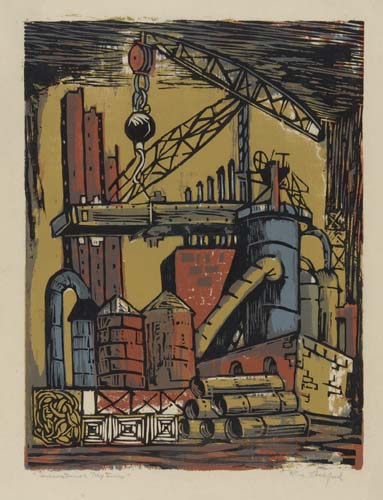
“Artists are always on the bread line, but this year they are in even worse straits than usual.”
-John Sloan
Audrey McMahon & the Federal Art Project in New York
A little-known hero of the Federal Art Project is Audrey McMahon. A native New Yorker, she was the program’s regional director for New York, New Jersey and Philadelphia and was a former director of the College Art Association (her 1932 CAA program, which gave aid to artists, was absorbed by the government in 1935). To provide impetus for experimentation and to encourage emerging artists, she ordered the construction of a printmaking workshop in New York City under the auspices of the Federal Art Project. In 1936, McMahon was responsible for more than a third of those employed by the organization nationally, many of whom had their introduction to printmaking through it, and would later become world-famous artists, including Will Barnet, Stuart Davis, Willem de Kooning, Yasuo Kuniyoshi, Isamu Noguchi, Jackson Pollock, and Raphael Soyer (artists earned on average less than $30 a week).
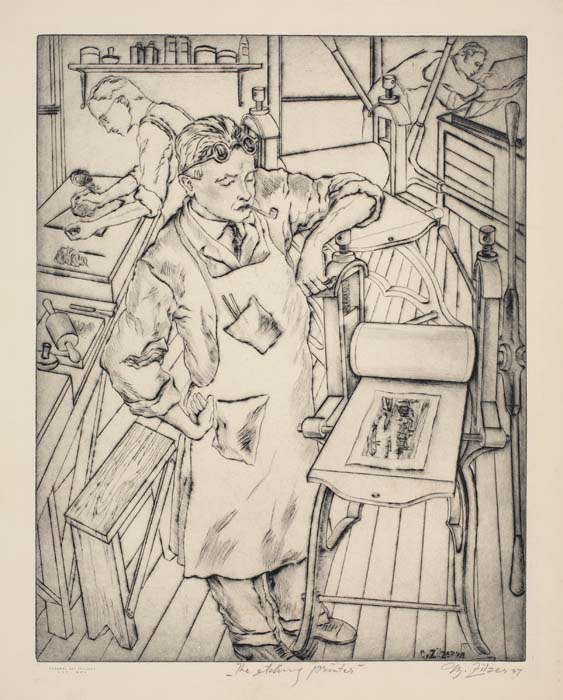
By January of 1937 the Federal Art Project workshop, under McMahon’s direction, had created enough prints to mount an exhibition, titled Prints for the People. New York Mayor Fiorello LaGuardia attended the opening. Further exhibitions followed after this initial success, each more ambitious than the last. Though usually pulled in editions of 25 (and no higher than 75), Federal Art Project prints could be obtained by federally funded organizations like museums “on the basis of a 99 year loan.” WPA prints had labels affixed, identifying them as government property (California and New York’s labels differed from the standard issued by the WPA) and are still regarded as such. A portion of each of the small editions was reserved for the artist to keep, and most have likely made it to the market.
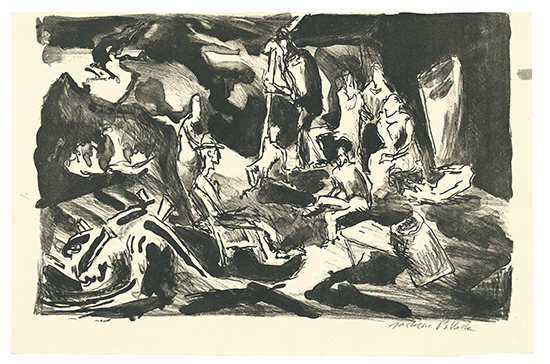
Federal Art Project printmakers enjoyed freedom not given to others employed by the organization, like muralists, whose works needed to be readily accepted by the general public. As a result, prints made during this time were not always the representational heroic narratives of American Scene art, but often showed more artistic freedom in subject and technique. The Social Realists of the organization politicized their images of the stark reality of urban life (including the breadlines intimated by Sloan), while Modernists tended towards abstraction, which at the time was not fully embraced by the American public. The Federal Art Project in particular boasted a diverse roster of artists from a range of ethnicities, skill levels, ages, genders and backgrounds. The dynamic atmosphere fostered experimentation and had a lasting impact on the younger generation of artists, some of whom would become leading figures among the Abstract Expressionists. The organization ensured not only the livelihood of these artists, but also professional recognition. Louise Nevelson and Alice Neel first received public attention while working for the Federal Art Project, and African-American printmakers included such significant figures as Hale Woodruff in Atlanta, Hughie Lee-Smith in Cleveland and Dox Thrash in Philadelphia.
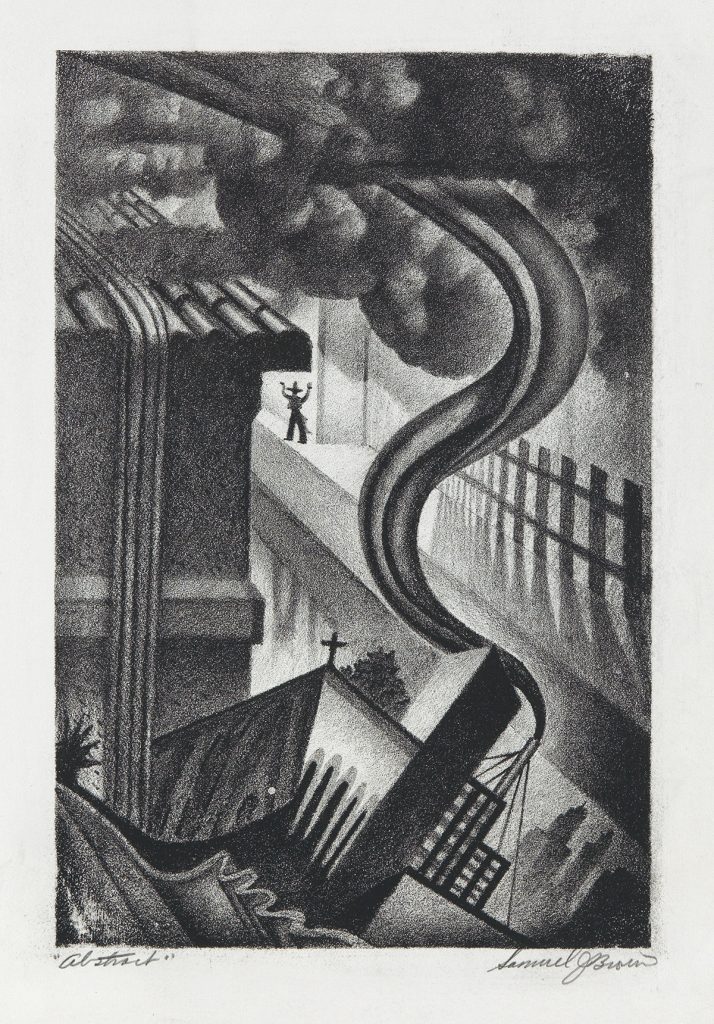
The Harlem Artists Guild
Nigel Freeman, director of African-American fine art, touches on the African-American artists who made significant contributions during the WPA era.
African-American artists made significant contributions to printmaking during the WPA era when given access to the opportunities found in its print-shops and community art centers. The Federal Art Project’s Graphic Art Division (GAD) didn’t begin hiring African-American artists until 1937, three years after its creation. Organized by a collective of artists called the Harlem Artists Guild, the Harlem Community Art Center also opened in 1937 as part of the Federal Art Project, with sculptor Augusta Savage as its first director.
The Center became the heart of the Harlem Renaissance as a learning and meeting place for the first generation of modern African-American artists. Its instructors and students included Charles Alston, Henry Bannarn, Romare Bearden, Bob Blackburn, Selma Burke, Ernest Crichlow, Aaron Douglas, William H. Johnson, Ronald Joseph, Jacob Lawrence, Norman Lewis and James Lesesne Wells.
Related Reading: Romare Bearden’s Letters to Art Historian Harry B. Henderson, Jr. and Fine Sculpture by African-American Artists
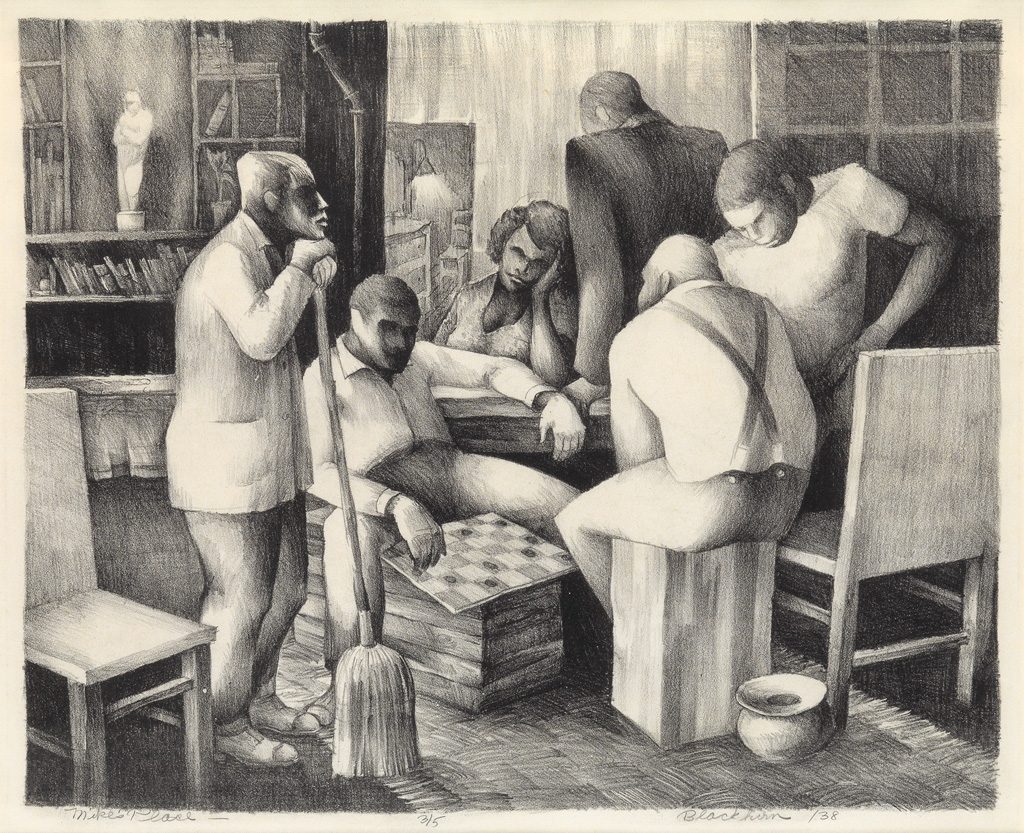
The Harlem Artists Guild pressured the Federal Art Project to include more African-American artists, and Norman Lewis was one of the Federal Art Project’s first hires in New York in early 1937. The organization went on to hire more than 100 African-American artists. Lewis worked with the graphic arts division in lithography while also working in its murals division.
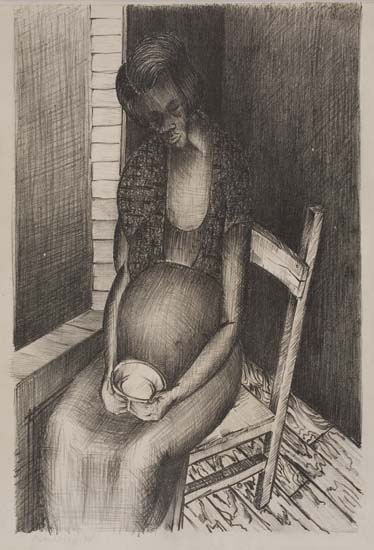
Dox Thrash & Philadelphia’s Role in the WPA
![Dox Thrash, Mr. X (First Version) [Self Portrait], carborundum mezzotint over etched guidelines, circa 1937-38.](https://www.swanngalleries.com/news/wp-content/uploads/2020/04/Dox-Thrash-Mr-X-Self-Portrait.jpg)
Philadelphia led the way in the WPA for African-American artists’ involvement and contributions to printmaking. Dox Thrash was the first African-American artist hired to work at the Fine Print Workshop of Philadelphia, the only WPA community center focused on printmaking. Thrash was appointed the supervisor of the Federal Art Project’s graphics division in Philadelphia, and pioneered the carborundum mezzotint, a new intaglio printmaking technique. Thrash instructed and collaborated with many printmakers including two young African-American artists Claude Clark and Raymond Steth who were also hired in the Federal Art Project.
The Federal Art Project & Printmaking Innovations
Early on, McMahon recognized the artists’ interest in exploring color printmaking. In 1935, she presented the WPA with four-to-five-color lithographs, as well as color woodcuts. These developments led the United States into a fertile era of modern printmaking and marked the beginning of the first American professional printmaking workshops in cities like New York (an example being Bob Blackburn’s Printmaking Workshop, which opened in 1947), Chicago, San Francisco and Los Angeles, which ultimately led to the contemporary print workshops like Tamarind, ULAE, Gemini G.E.L., Crown Point Press and many others, that have significantly contributed to myriad art movements from the 1960s onward.
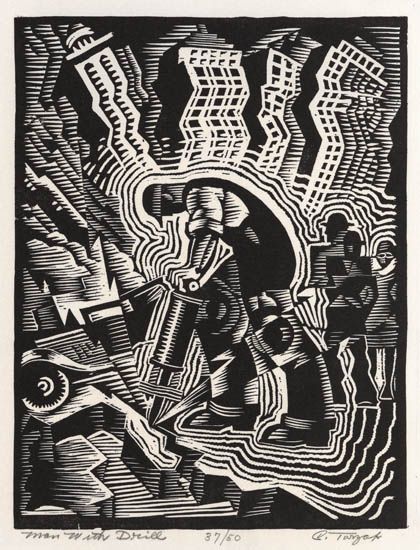
Even more progress ensued when Federal Art Project artists started to employ color screenprinting. Anthony Velonis, a WPA poster artist, first recognized the medium’s efficiency and presented it to Audrey McMahon. Receptive to the medium’s application in fine art, she reassigned Velonis to work with a small group of Federal Art Project artist-printmakers, including Elizabeth Olds, Harry Gottlieb and Louis Lozowick. By keeping editions limited to only 25 or 30, the group was able to explore the artistic and commercial potential of the medium. Popularized by Velonis and the Federal Art Project, the screenprint became a staple of 1960s Pop Art, favored by Andy Warhol, Ed Ruscha and Roy Lichtenstein.

Conceived out of crisis, the Federal Art Project was instrumental in the birth and development of modern and contemporary printmaking and the widespread utilization of mediums and styles that have become synonymous with Post-War and Contemporary prints.
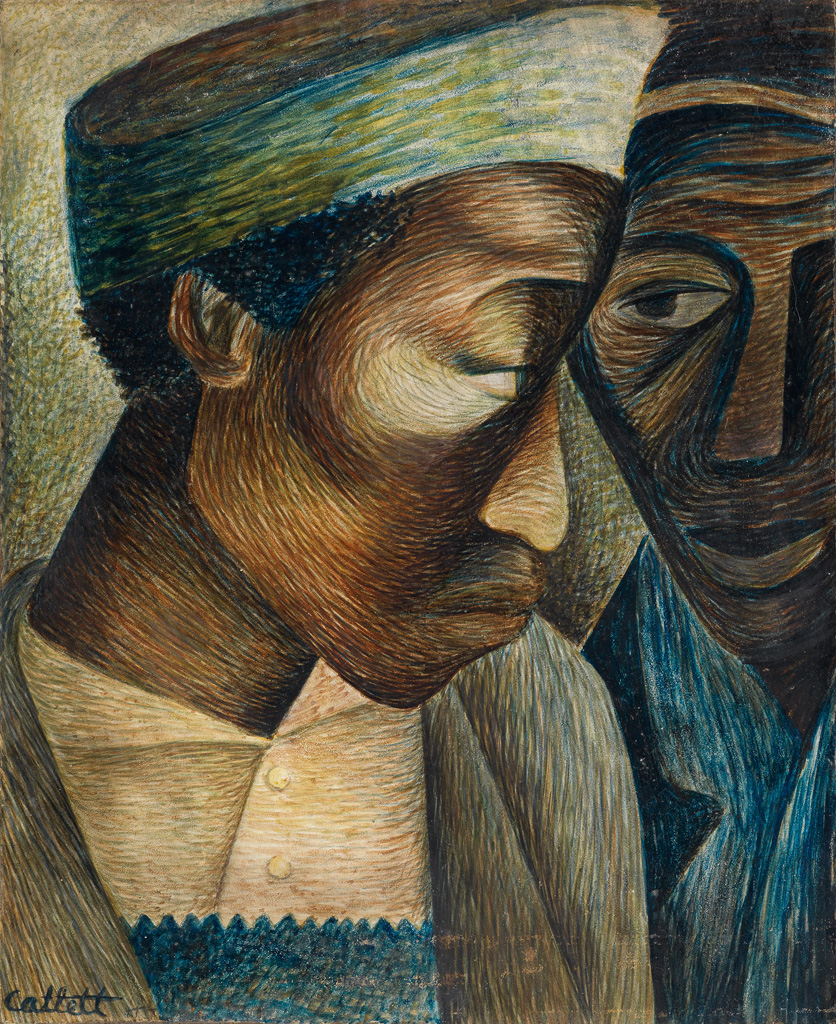
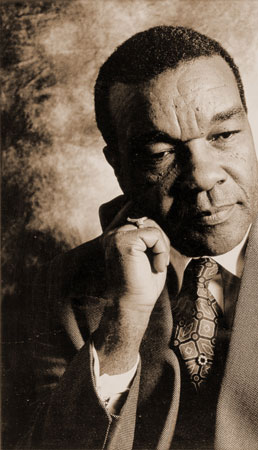
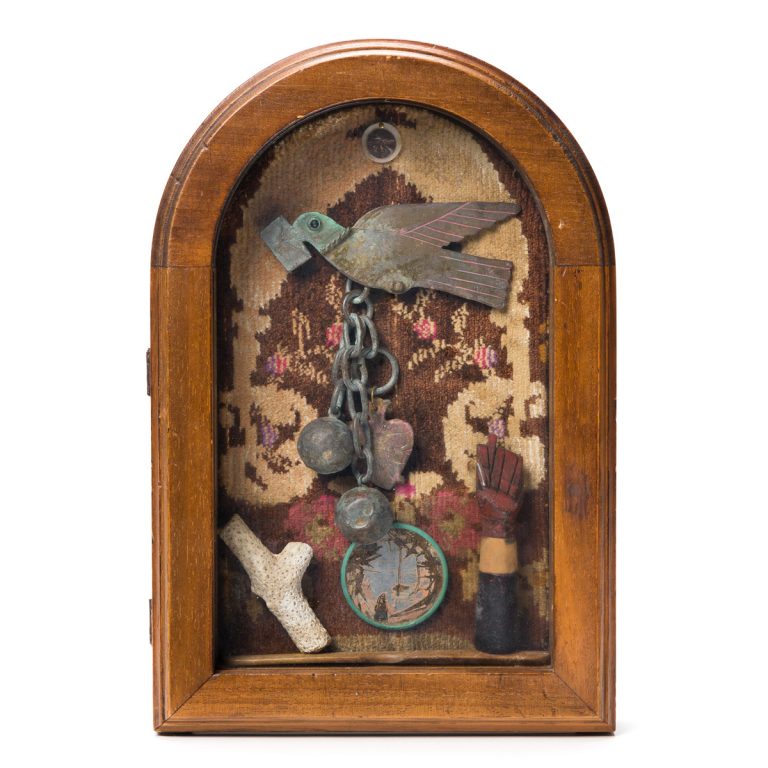













![Grace Meschery-McCormack shares about two copies of Fernando de Rojas’s ‘La Célestine,’ including a limited edition copy illustrated by Pablo Picasso.
At auction April 22. Learn more about the works at the link in our bio.
#Rarebooks #rarebookdealer #antiquarianbooks #auctions
_______________________________________
Music Credit:
Schubert - Piano Quintet in A major ‘The Trout’, D. 667 - IV. Andantino – Allegretto
Music provided by Classical Music Copyright Free on Youtube [https://tinyurl.com/visit-cmcf]
Watch: • Schubert - Piano Quintet in A major ‘...]](https://scontent-iad3-1.cdninstagram.com/v/t51.75761-15/491443494_18499096345036585_5935932878956098058_n.jpg?stp=dst-jpg_e35_tt6&_nc_cat=107&ccb=7-5&_nc_sid=18de74&_nc_ohc=QlZg0o3Vx4oQ7kNvwHlPDYS&_nc_oc=Admkx5CH3-5gNl9kFtE07uGBWzC1TrU8LutoXTk30m77fiWC0m2_oIjIUSQBbJE8mA8&_nc_zt=23&_nc_ht=scontent-iad3-1.cdninstagram.com&edm=AM6HXa8EAAAA&_nc_gid=LKk1gtEmoFkqdxHMdO-bqg&oh=00_AfK7zXwFsWEqv8D6xhU0wob_5asRzpiOa4hEb4NHZ6Sw9w&oe=682572D1)

